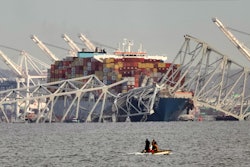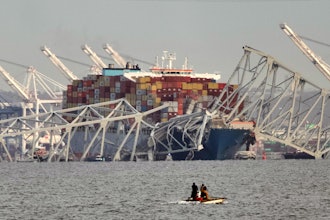Companies trying to maximize the return on their supply chain planning software need to be aware of the effects of incorrect and incomplete master data on the functioning of their system.
Most companies with large scale, complex supply chains have installed specialized software to manage those supply chains. In complex business environments, specialized software is required to plan and execute supply chain activities while optimizing inventory levels, controlling freight costs, and providing target levels of customer service. These are critical business objectives and companies typically spend tens of millions of dollars to install either supply chain planning modules within their ERP systems or separate supply chain planning applications to operate in conjunction with their ERP systems.
However, many companies are disappointed in the return on their investments in these systems. The supply chain planning module or planning application does not deliver the desired benefits of optimizing inventory, freight, and customer service levels. In extreme cases, business users may even reach a point where they don’t trust the planning system’s guidance and simply execute transactions according to their own ideas of what will work.
These kinds of failures are usually not due to inherent problems or lack of capability in the planning systems themselves. Rather, a likely cause of a supply chain planning system’s underperformance is a widespread problem in providing accurate inputs to make the system work well. The old concern about “garbage in / garbage out” applies to an extreme degree to the operation of supply chain planning systems. Of particular importance is the master data – the master data controls the execution of transactions and provides the structure for the planning system.
The business challenges of getting master data right
But if the problem is simply getting the master data inputs right, why do so many companies struggle to get their users to provide that correct input? Can’t the users be trained properly and expected to reliably provide the right data?
Unfortunately, it is not as easy as it sounds. The input requirements to make a supply chain planning system work correctly are inherently complex. And the knowledge to provide the inputs is typically distributed across many users in different operating organizations, often with different access permissions to update the system. The planning system itself does not govern the coordination of the different users providing the different pieces of data in a way to ensure that the required data is complete and consistent.
Consider the data requirements and the organizational challenges required to implement planning for some ordinary business decisions. (The examples below refer to the data constructs in SAP’s ERP system and its APO planning modules.)
A very simple example is the business decision to sell an existing customer a different product. In this case, the customer and the product already exist in the master records, but the relationship between the customer and product do not. For the transaction system to work correctly, there needs to be a new record in the item proposal table with typical order quantities and shipping modes (so sales or customer service knows to offer the new product at the time of a sales inquiry). For the planning system to work well, there needs to be an entry in the customer-material-info record (CMIR) which will capture what the preferred supply point should be for that customer / material combination. What distribution center should be the shipping point for this material to this customer in order to reduce shipping costs and provide optimal customer service? If the material is already extended to the preferred supply point for the customer, great. If not, several records need to be created to make both the transactional and planning systems work. A record to extend the material to the plant needs to be entered (with values for a large number of fields, including MRP data). A route (object has plant to plant and shipping mode as key) may need to be entered and a transportation lane (object has material and plant to plant and shipping mode key) will definitely need to be entered to connect the supply point plant with the appropriate manufacturing plant. In rare cases, updates to transportation contracts may be required. There will also need to be a demand forecast for the new customer / material combination as input to the planning system. And, based on the new demand for the product at the new plant, the safety stock levels for the supply point may need to be adjusted.
Which users know all this information? Typically someone in sales will make or at least know the original decision to sell the different product to a customer. That same person may know the order quantities, shipping mode and (maybe) demand forecast for the new combination. But there are usually one or more other people involved in knowing the rest of the data. Knowing the right preferred supply point involves expertise in the supply chain network. Extending a material to a new plant requires many entries in the master record (procurement type, MRP fields, profit center, etc.). Routes and transportation lanes involve knowledge of the transportation function. In some companies, the processes and access permissions to enter data into the ERP system (item proposal, CMIR, material to plant extensions, routes) may be divided from processes for entering data into the APO system (demand, transportation lanes).
If a simple business decision like selling a different product to an existing customer entails this master data process complexity, imagine what a more complex decision involves. Take as an example the decision to start manufacturing a new product. Here there is the question of whether the product was created for a specific customer or not. If so, there would be one or more specific demand “pull” supply chain plant extensions and the possibility of forecasting demand. If not, there would only be some “push” supply chain plant extensions and some generalized process for capturing demand. In either case there would be the need for creating the material views and entering field level data for classifications, units of measurement, descriptions, etc.(at the material key level), the sales org view and fields including sales text (at the material sales org key level) and the extension of the material to the manufacturing plant (at the material to plant key level). There would also be data for whatever additional plants the material was extended to and data for the corresponding routes and transportation lanes. In addition, there would be data to allow the manufacturing process to work on both the ERP and planning side (BOMs, routings, production versions) etc. And, depending on the industry, there may be the requirements to create quality inspection data (specifications), and product regulatory indicators and other information (e.g. Material Safety Data Sheets).
Here, many people would be involved. The product manager who authorized the creation of the new product would not likely personally know the values that go into the hundreds of fields in dozens of tables. To get the data right would almost certainly require expertise from several other organizational areas, including marketing, finance, manufacturing, supply chain, quality, and perhaps regulatory.
It is important to note that the base data system will allow the data to be entered in pieces without guaranteeing that all the data necessary to make the system “operable as planned” is entered. The ERP may require particular mandatory fields before a master record can be entered. But it will not control whether all necessary views and all relationships across tables are entered. So a material code can be created but product manufacture can’t be recorded because of the lack of a BOM. A shipment may be blocked because of the lack of a quality view. A product may not be extended to the right supply points, to allow adequate service and reduced shipping costs to the target customers for that product.
Methods to control and improve the master data process
Most companies have their master data input access controls restricted to a small number of people with the hope of keeping data accurate and to prevent misuse and accidents with the powerful master data transactions. However, as in the cases sited above, no one user is likely to know the correct information to enable proper functioning of the transaction and supply chain systems. So, typically, companies develop forms to capture data from users and then submit those forms to the small number of users who have master data update authority (often in a separate group often called a master data center of excellence – COE).
However, a forms process does not solve all the data problems. it is difficult to coordinate the data collection process across all the right people before the form is complete and submitted to the COE. The completion of the form may take a long time. Forms may backlog in the COE before input. There may be lengthy recycle when invalid values are rejected by the system at the time the COE enters data. In extreme cases, getting the master data right becomes a critical path item for new product introductions. Finally, no form can address all the complex data requirements to ensure both accuracy and completeness.
Sometimes progress can be made with good master data process definition, procedural improvements and better user training. But procedural improvements have to reach far and wide in the data, well beyond the “key” data elements that a business may track in an improvement effort. Just having a material code is not much help unless it is also extended correctly within the supply chain, complete with all data required to enable product movements (actual and planned) and connected correctly with customers.
In some cases, a specific application to automate and support the process of converting business decisions to complete master data updates may be justified. A well-defined application can provide the business rules that define complete and accurate data, provide the workflow that gets the data collection process coordinated across multiple users, reduce elapsed time in getting complete data into the system and reduce overall workforce effort involved in the process.
Summary
Companies trying to maximize the return on their supply chain planning software need to be aware of the effects of incorrect and incomplete master data on the functioning of their system. Relatively modest projects (systems and non-systems) to improve master data processing may offer an excellent business return, since improvements in the master data management process can lead to positive leveraging of planning system performance.























